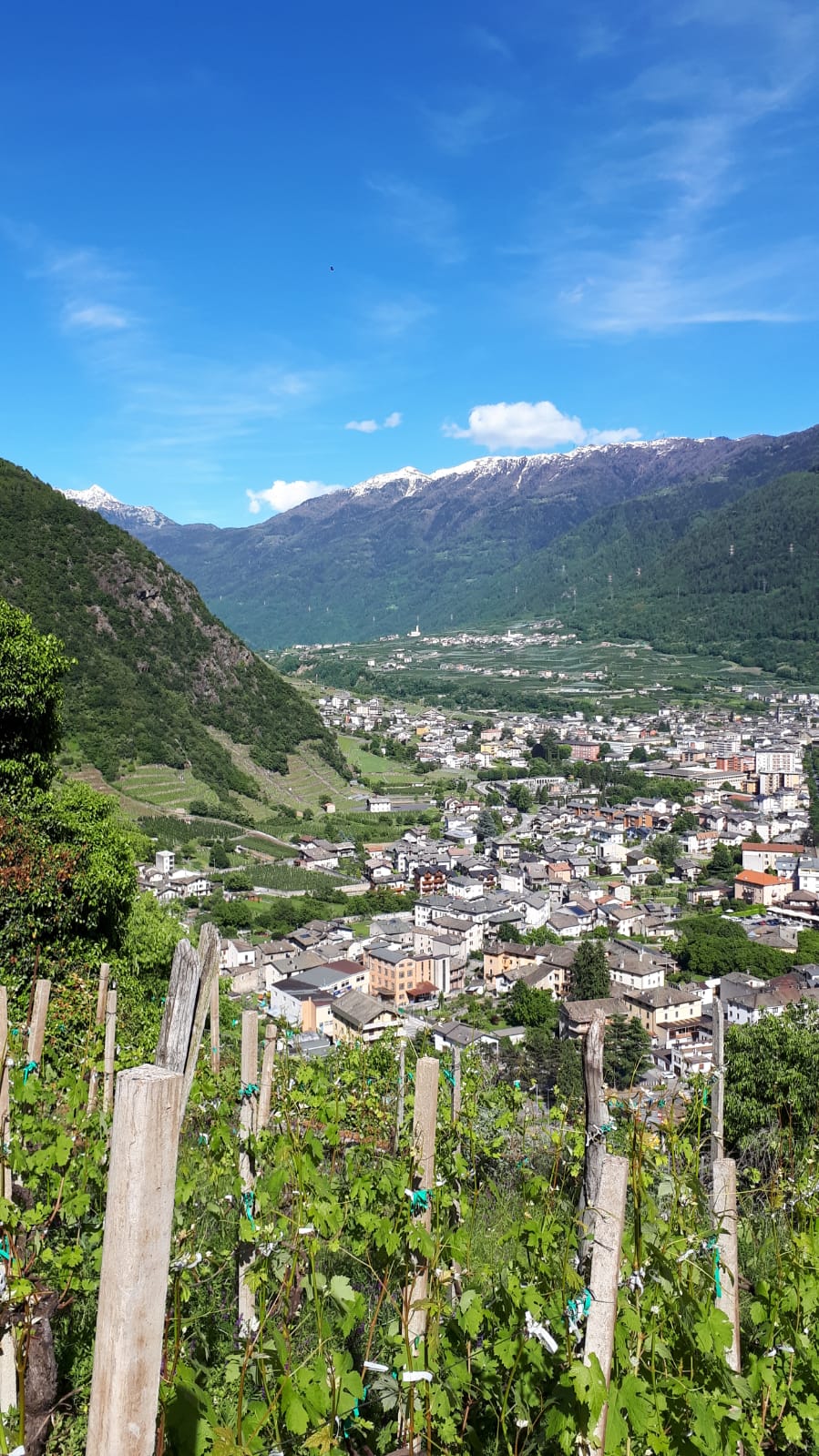
VALTELLINA AND ITS HEROIC WINES
Driving through Valtellina today, as in the past, one is captivated by the extraordinary landscape effect created by a sublime architectural feature: the largest terraced mountain vineyard area in Lombardy.
This area encompasses the coastal strip between the municipalities of Ardenno and Tirano, stretching for about 40 km, and is characterized by exceptional territorial and climatic conditions. These include extraordinary sunshine with over 1900 hours of sun per year, constant ventilation with low rainfall, low air humidity, and a high temperature gradient favored by the considerable mass of rocks and stones that characterize the terraced vineyards.
Without these natural characteristics, the Nebbiolo grape would not have given rise to the fabulous D.O.C.G. Sforzato di Valtellina and D.O.C.G. Valtellina Superiore wines.
Valtellina is the only wine-growing area in Italy to have two D.O.C.G.s within the same production area. The other denominations are Rosso di Valtellina D.O.C. and Alpi Retiche I.G.T. Valtellina Superiore D.O.C.G. can bear the indication of one of the five sub-zones: Maroggia, Sassella, Grumello, Inferno, Valgella.
In Valtellina, the focus is on enhancing the Nebbiolo grape, which must account for at least 90% of the blend. The maximum production per hectare is 8 tons, and the minimum aging period is 24 months, of which at least one year in wood. Valtellina Superiore wines are also available in a Riserva version, which must be aged for at least 36 months.
VALTELLINA SUPERIORE D.O.C.G. MAROGGIA: This is the latest of the five sub-zones to be recognized (2002). The name seems to derive from Malaroggia, which recalls a river with a rugged surrounding area; in reality, the Maroggia area is a pleasant and sunny place located on a slope of the Rhaetian side in the municipality of Berbenno.
VALTELLINA SUPERIORE D.O.C.G. SASSELLA: This is the historically most well-known red wine of Valtellina. It originates in the area west of the city of Sondrio, and its name derives from the knoll on which the Sanctuary dedicated to the Madonna stands, one of the symbols of the Valtellina territory. Sassella is a reference to the stones, the succession of terraces supported by dry stone walls embedded in spurs of rock.
VALTELLINA SUPERIORE D.O.C.G. GRUMELLO: This is a great wine produced northeast of Sondrio and takes its name from the Grumello hill, where the Grumello Castle now stands, which has dominated the valley since the 13th century.
VALTELLINA SUPERIORE D.O.C.G. INFERNO: The characteristic name most likely derives from the roughness of the terrain and the very high temperatures that are reached during the summer period in the small terraces carved out of the rocks. The production area of this wine, which lies immediately east of the Grumello area, is the smallest of the five sub-zones and certainly the most rugged.
VALTELLINA SUPERIORE D.O.C.G. VALGELLA: The Valgella area, whose name derives from valgel, a dialectal form for small streams that characterize the area, is located in the municipalities of Chiuro and Teglio and is the most extensive of the sub-zones.
SFORZATO DI VALTELLINA D.O.C.G.: This is the iconic wine of the Valtellina territory, a wine of the vineyard and the cellar, and the first dry red passito wine in Italy to have been awarded the D.O.C.G. (2003). Sforzato (Sfursàt in dialect) owes its name to an ancient technique of drying Nebbiolo grapes: the healthiest and ripest bunches, after being hand-picked and spread out on gratings, are naturally dried in cool, dry rooms called fruttai. Between January and February, the dried grapes, which will have thus undergone a significant loss of their original weight with the consequent concentration of sugars and the development of aromatic substances, are vinified in red. The result is a wine with a dark garnet color and an intense and warm bouquet, with a minimum total alcohol content of 14 degrees.
ROSSO DI VALTELLINA D.O.C.: The production area does not refer to sub-zones and includes the entire vineyard area of the province of Sondrio, from Ardenno to Tirano